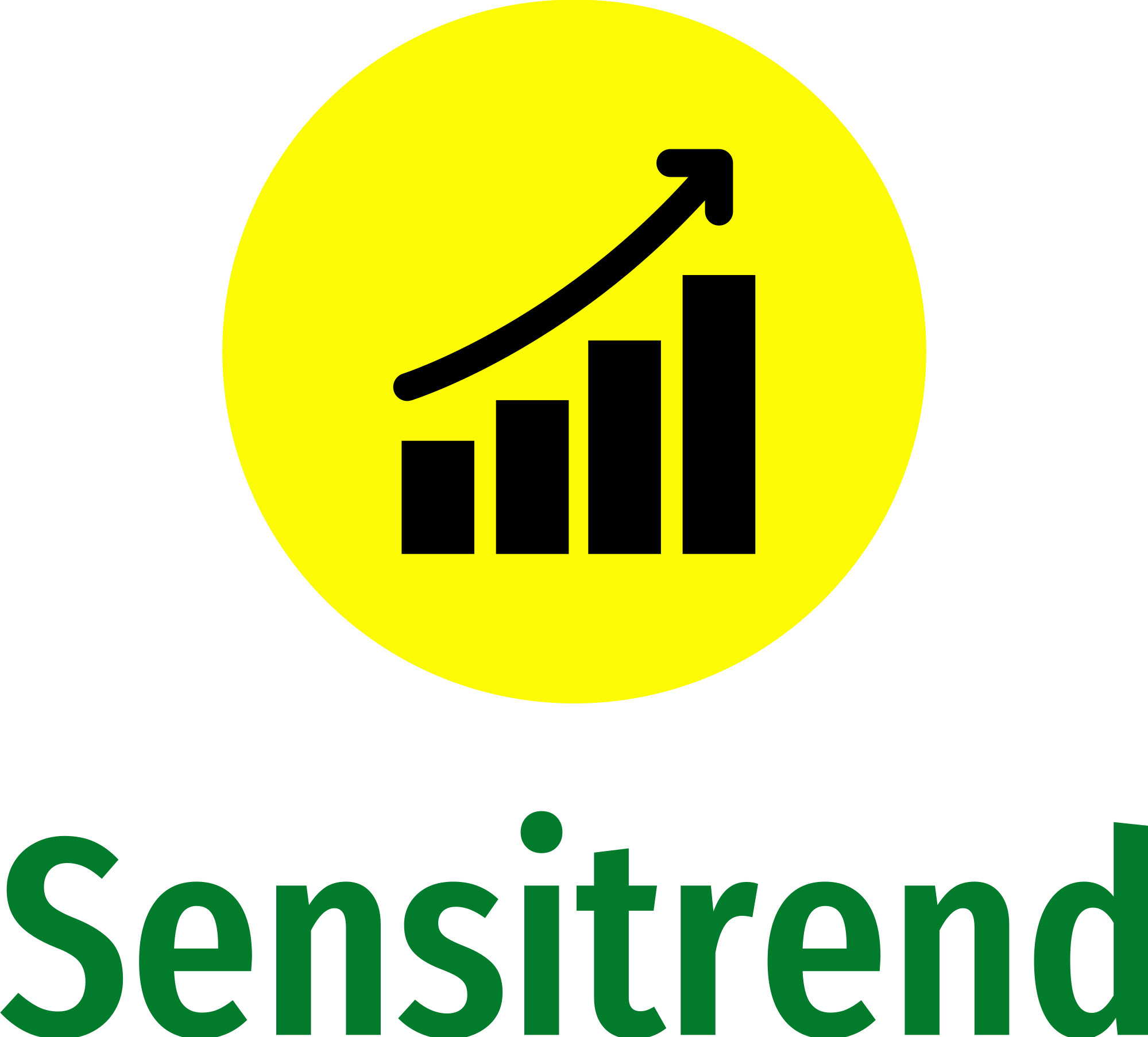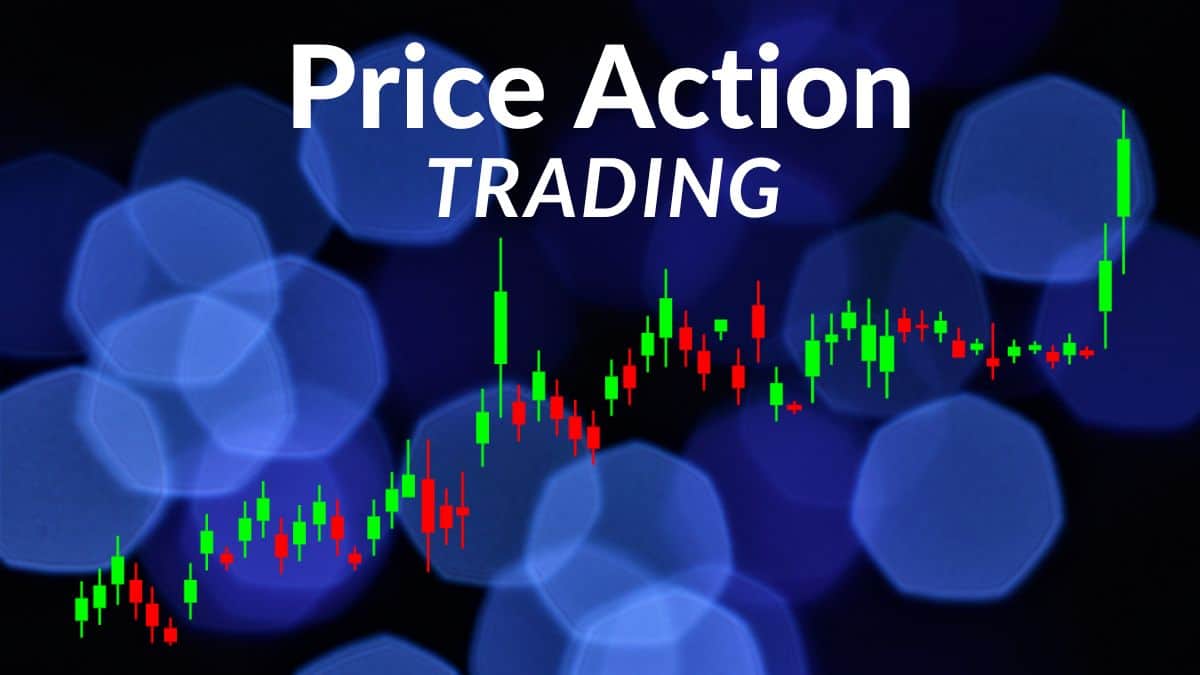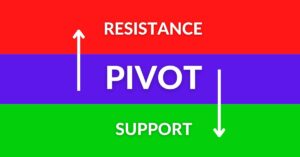Price action trading is a strategy that focuses on the movement of the price rather than relying on indicators.
Introduction
Tired of getting lost in a sea of indicators and technical analysis tools? Simplify your trading and reduce noise by trying price action trading. This strategy focuses on the stock’s past performance, by only analyzing its price movement. You’ll make decisions faster, without constantly trying to interpret different signals.
Price action trading is perfect for those looking for a fresh approach, or simplifying their strategy. New traders can also benefit from its easy implementation and understanding. Give price action trading a try; it might be exactly what you need.
What is Price Action Trading?
Price action trading is a method of analyzing and making trades based solely on the movement of prices. Other common stock trading approaches rely on indicators or other tools. But price action trading focuses on using the information provided by the raw price movement of a stock or index.
By studying the way that prices fluctuate and change over time, traders can gain valuable insights into the underlying forces driving market trends and make informed decisions. This approach is straightforward because of its simplicity and reliance on only prices. So, this makes it a popular choice among traders seeking to fully utilize the market’s potential.
Why Use Price Action Trading?
There are several reasons why traders might choose to use price action trading:
- It’s simple: Unlike technical analysis, which can involve a wide range of indicators and tools, price action trading is based on a single element: the price of an asset. This simplicity can make it easier for traders to understand and apply.
- It’s objective: Price action trading relies on objective data, rather than subjective interpretation. This can help traders make more objective and unbiased trading decisions.
- It’s flexible: Price action trading can be applied to any market and any time frame, making it a versatile approach to trading.
- It’s practical: Many traders have found that price action trading can be a highly effective way to analyze and trade the market.
How to Use Price Action Trading
So, how do you get started with price action trading? Here are some critical steps:
- Identify key price levels: The first step in price action trading is to identify key price levels, such as support and resistance levels. These are price points where the market has a tendency to reverse or stall. By identifying these levels, you can better understand where the market will likely go next.
- Look for price action patterns: Once you’ve identified key price levels, the next step is to look for the patterns in the price action. These patterns can include things like trend lines, candlestick patterns, and chart patterns. By recognizing these patterns, you can get a sense of the market’s sentiment and where it may be headed.
- Use risk management techniques: As with any trading strategy, it’s important to use risk management techniques to protect your capital. This can include things like setting stop-loss orders and limiting your position size.
- Practice, practice, practice: As with any skill, the key to becoming proficient at price action trading is practice. By regularly analyzing the market and applying your price action trading techniques, you can improve your skills and increase your chances of success.
5 Key Steps In Price Action Trading Strategy
Identify the underlying trend of the market
Trend lines, drawn as straight lines on a chart, can help traders identify the direction of the trend and potential points where the price may change direction. By connecting two or more price points, trend lines can be either uptrends or downtrends.
An uptrend line, drawn along the lows of the price action, suggests that the price is generally rising. Conversely, a downtrend line drawn along the highs of the price action indicates that the price is generally falling.

Trend lines can be helpful for traders looking for potential entry and exit points for trades. For instance, if the price is in an uptrend and bounces off an uptrend line, it may be a good opportunity to enter a long position.

Alternatively, if the price is in a downtrend and breaks through a downtrend line, it may be a good opportunity to enter a short position.
It’s worth noting that trend lines are not always precise, and the price may not always follow them perfectly. To increase the reliability of trade signals, it’s recommended to use trend lines in conjunction with other technical analysis tools.
Identify important chart levels:
On the chart, look for levels of the pivot, support, and resistance because these are the regions where the price may show specific behaviors.

Support and resistance, along with pivot points, are all key components for successful traders to consider when determining their trade strategies. Support acts as a floor for the price of a stock, with more buyers than sellers at this level causing the price to bounce back up.
On the other hand, resistance serves as a ceiling, with more sellers than buyers leading to a stall or decline in the price. Pivot points, calculated using the previous period’s high, low, and close, can also serve as potential entry and exit points for trades.
By incorporating these concepts and using them in conjunction with trend lines and chart patterns, traders can increase their chances of making informed and profitable trades.
It’s important to remember that support and resistance levels are not exact prices but rather zones where the price may struggle to break through.
Identify Chart Patterns
A chart pattern is a specific formation on a stock chart that displays the price action and may suggest a trend reversal or continuation. These patterns are formed by the interaction between supply and demand in the market. This offers an understanding of the equilibrium between demand and supply forces.
Some common chart patterns include head and shoulders, triangles, and wedges.
Head and shoulders pattern

The head and shoulders pattern is a popular technical analysis tool used to identify potential tops in the market. This bearish reversal pattern is formed by three peaks, with the middle peak (“head”) being the highest and the two outer peaks (“shoulders”) being lower.
The key aspect of this pattern is the “neckline,” which is a line drawn by connecting the lows of the two shoulders. When the price falls below this neckline, it is considered a breakdown. So, it confirms the pattern as bearish. Traders and analysts often use the head and shoulders pattern to estimate the potential downside of a stock or index.
They measure the distance between the head and the neckline and then project that distance down from the point of the breakdown to calculate a potential price target.
Triangular chart pattern

Triangles can be symmetrical, ascending, or descending and are classified as continuation patterns. A symmetrical triangle indicates a period of consolidation. But an ascending triangle suggests the possibility of an upward breakout. Conversely, a descending triangle points to the potential for a downward breakout.
A triangular chart pattern is a formation that appears on a stock or financial instrument’s price chart. It usually happens when the price consolidates within a symmetrical triangle shape. This formation is defined by two trendlines, one of them showing resistance while the other marking the support.
As the price approaches the apex of the triangle, the trading volume decreases, signaling that market participants are unsure of the next move.
A breakout happens when the price of the stock or instrument moves above or below one of the trendlines of the triangle. When the price goes above the resistance trendline, it is considered a bullish signal. This is perfect for investors and traders to go long. Conversely, when the price falls below the support trendline, it is considered a bearish signal, signaling traders to go short.
Traders and analysts use the breakout direction and the size of the triangle as an estimate for the price’s future movement. It is important to note that like any other chart pattern, it is not a surefire way to predict price movement. So, additional indicators and risk management should be considered to make well-informed decisions.
Rising wedge or rising channel chart pattern

Wedges, like triangles, are continuation patterns that can either rise or fall. A rising wedge points to the likelihood of a downward breakout. But a falling wedge indicates the possibility of an upward breakout.
A rising wedge or rising channel is a technical analysis pattern that can be observed in the charts of financial instruments such as stocks. It is considered a bullish reversal pattern as it indicates a change in trend from downward to upward. The pattern is characterized by two upward-slanting trendlines. The upper one represents resistance and the lower one represents support.
As the price approaches the upper trendline, the trading volume typically decreases. This can be a sign that traders are uncertain about the direction of the next move. However, It is also important to note that the Rising Wedge Chart pattern can also be seen as a bearish pattern.
The price usually moves in the direction of the wider side of the wedge and once it breaks the lower trendline it is considered a bearish signal.
A breakdown from a rising wedge or rising channel pattern occurs when the price falls below the lower trendline of the pattern. This is generally considered to be a bearish signal, and traders may look to enter short positions in the stock or financial instrument.
Falling wedge or descending channel chart pattern

The falling wedge pattern, which develops during a downtrend, is a highly sought-after bullish reversal indicator for traders. Lower lows and lower highs converge to form a clear wedge shape, which serves as its defining feature. A break from this pattern is a sure sign that the market is turning around and moving upward. This is frequently used by traders as a signal to start profitable long trades.
Volume is a key factor in spotting a falling wedge pattern. In comparison to patterns with diminishing volume, patterns with increasing volume are thought to be more significant and dependable. This is so because a rise in volume indicates a rise in market interest, which raises the likelihood of a breakout.
Another important component of the falling wedge pattern is price action. Investors frequently search for upbeat signs, such as positive candlestick patterns or positive divergence on momentum indicators. These indications act as confirmations of a breakout, giving a trader more assurance.
In conclusion, traders can enter winning long positions by using the falling wedge pattern. To validate the pattern and place-wise trades, it is important to monitor volume and price action.
Identify the candlestick patterns
Candlestick patterns are a popular tool in technical analysis that can help traders and investors understand the balance of buying and selling pressure in the market. These patterns are depicted graphically, using a body and a wick to represent different aspects of the price action.
The body of the candlestick represents the range between the opening and closing prices. The wick represents the high and low range for the period. This gives an overview of the volatility during that period.

There are several candlestick patterns that are commonly used by traders, such as the doji, hammer, and shooting star. Each of these patterns conveys different information about the market’s sentiment and price action.
The doji pattern is characterized by a small body with long wicks on both sides, indicating indecision in the market.
The hammer pattern, on the other hand, features a small body with a long lower wick. This indicates that the price was pushed down but eventually recovered. This pattern is often seen as a bullish signal.
The shooting star pattern, in contrast, has a small body with a long upper wick. This indicates that the price was pushed up but eventually fell back down. This pattern is often seen as a bearish signal.
Candlestick chart patterns can be a powerful tool for identifying potential trade opportunities. It’s important to keep in mind that these patterns are not always reliable. Hence it is recommended to use them in conjunction with other technical analysis tools, such as trend lines and chart patterns to validate the signals.
Additionally, it’s crucial to have an effective risk management strategy and consider other fundamental factors to make well-informed decisions.
Volume
Volume reflects the market mood and trend strength, which has an impact on price movement. A stock’s price may shift in the direction of the volume if volume increases. It generally indicates greater interest in the stock. Whether the trend is bullish or bearish, a high volume is often indicative of a strong trend.

Low volume during a price increase can suggest weak market demand and a potential lack of sustainability. Conversely, high volume during a price drop may signal a significant and likely prolonged trend change.
Traders seek confirmation by examining the relationship between price and volume. High volume during price rises indicates strong buying interest and confirms a bullish trend. Conversely, high volume during price falls confirms significant selling pressure and a bearish trend.
Traders use volume analysis to uncover key levels of support and resistance. If the volume is low at resistance levels, it could mean the resistance is not as sturdy as it appears. This allows prices to continue to increase. And on the other hand, if the volume is low at support levels, it could indicate weak buying pressure, potentially leading prices to keep falling.
Hence, by analyzing volume, traders can gauge market sentiment and trends’ strength and discern buying or selling opportunities. They can also use volume analysis to confirm price movements and identify potential opportunities.
Frequently Asked Questions:
Does price action trading work?
Yes, the price action trading strategy works often in trading. Because this strategy is very simple and gives a perfect raw idea of the price behavior of the underlying component. Any trader, regardless of experience level, can make a sensible trading choice in any market circumstance.
Is price action trading profitable?
Price action trading, if done by traders who have a deep understanding of the markets, the ability to read charts and see patterns, and the discipline to stick to a plan, can yield highly profitable results. But, like any other trading method, it is not suitable for everyone and comes with its own set of risks. Hence, traders should always be cautious and manage risk efficiently.
Why price action trading is the best?
Price action trading is the best because of its simplicity and straightforwardness. Also, it is based solely on the analysis of historical price data and charts, without the use of indicators or other technical analysis tools. This makes it an easily understandable and implementable strategy for any trader.
Where to learn price action trading?
Learning price action trading takes time, effort, and dedication. One of the best ways to learn is by spending time observing raw charts and reading books on the subject. Online courses and joining trading communities can also be helpful in gaining knowledge and understanding of the approach. Additionally, getting guidance and mentorship from experienced traders can also be beneficial. However, self-practice and experimenting with the strategy in a demo account is the most effective way to fully grasp and master the technique.
Conclusion
However, understanding these price action strategies alone is not enough. To be successful, traders and investors should also stay informed about stock market conditions and other fundamental factors that can affect the stock.
Moreover, it is also important to have a robust risk management plan in place to avoid any unexpected losses. The plan should be well thought out and adjusted to the specific trade and market conditions, it is also a good practice to regularly review and update it.
By combining technical analysis with fundamental research and a sound risk management plan, traders and investors can increase their chances of success in the stock market.
Price action trading can be a powerful tool for any trader with observation, practice, and discipline.




